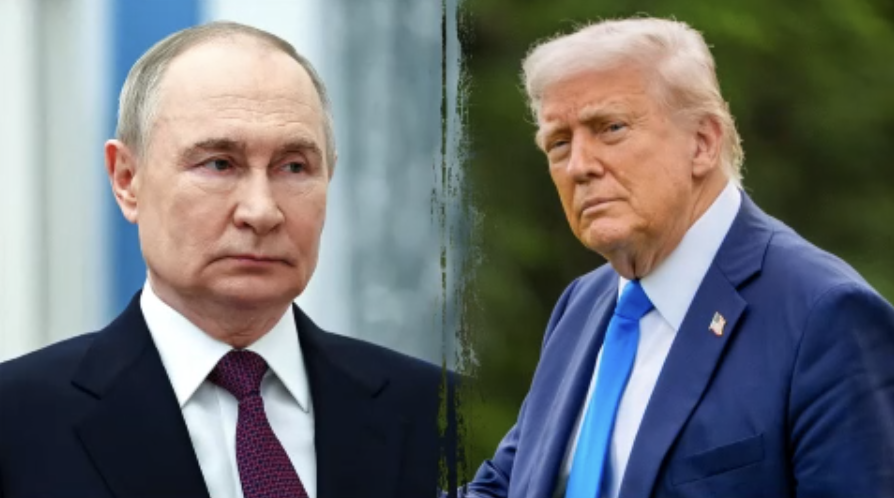Trump and Putin Reunite as ‘Old Friends’ During Alaska Summit, Body Language Expert Says
Presidents Donald J. Trump and Vladimir Putin met Friday at Joint Base Elmendorf-Richardson in Anchorage, Alaska, marking their first face-to-face encounter in six years. The high-stakes summit, lasting nearly three hours, centered on the war in Ukraine and prospects for renewed U.S.–Russia economic cooperation—two issues that continue to define the uneasy relationship between Washington and Moscow.
Though the talks concluded without a ceasefire agreement, both leaders described the discussions as “constructive.” Trump characterized them as “very productive,” saying that while “many points were agreed on,” a “couple of big ones” remained unresolved. Putin echoed the sentiment, calling the meeting “honest and necessary.” According to Newsweek, both hinted at progress toward a framework for peace but stopped short of announcing any tangible breakthrough.
A Handshake Loaded With Symbolism
Even before the formal discussions began, the moment that captured the world’s attention was the leaders’ greeting on the tarmac. With cameras rolling, Trump and Putin approached one another on a red carpet, shook hands, and rode together to the summit venue. Their every movement—the handshake, posture, and eye contact—was scrutinized by analysts searching for clues about the evolving dynamic between the two powerful figures.
Body language expert Patty Ann Wood, speaking to Newsweek, described the greeting as “a careful dance of deference, confidence, and subtle competition.”
As Putin approached, Trump stepped forward and began clapping—a small but notable departure from his usual habit of waiting for counterparts to greet him first. “That gesture signals respect,” Wood said. “It’s a nonverbal acknowledgment that Putin holds stature in this exchange.”
During the handshake, Trump presented his palm upward, rather than asserting his hand over Putin’s—an unusual reversal of his typical style. “Trump usually insists on having his hand on top, which conveys dominance,” Wood noted. “By turning his palm upward, he takes a more deferential posture, perhaps signaling that he views Putin as a powerful equal—or even a superior.”
Yet, in typical Trump fashion, he maintained one of his signature tactics: keeping the handshake tight to his body, subtly pulling Putin closer. “That’s an assertion of control,” Wood explained. “It’s his way of saying, ‘You come into my space.’”
Gestures of Power and Familiarity
As the two men held eye contact and exchanged smiles, Wood observed “a balance of deference and assertion.” Their heads remained close together, which she interpreted as a sign of warmth and familiarity. “It looked like two people who know each other well and are comfortable with one another,” she said.
Trump then added a second motion—a left-hand pat on Putin’s arm—a move Wood labeled a “double handshake.” “That’s a subtle display of dominance,” she explained. “It symbolically communicates, ‘I could strike if I chose to,’ though it’s framed as friendly.” Putin, she added, “responded in kind,” maintaining composure while mirroring Trump’s gesture.
As they walked toward the meeting site, the physical dynamics continued to shift. “It’s like a handshake chess game,” Wood said. “At one point, Trump’s hand shifts on top, reclaiming the dominant position.”
Observers also noted differences in their body posture. Putin appeared relaxed, swinging his arms freely—a contrast to the stiffness seen in previous appearances. Trump, meanwhile, kept his arms closer to his body, occasionally reaching out to grip Putin’s elbow and lean in to whisper. “That combination—control and intimacy—is deliberate,” Wood said. “It’s Trump’s way of blending personal rapport with assertive messaging.”
Reading the Optics
During the formal photo session, Putin briefly flexed his hands into fists before relaxing them. “That could signal readiness for confrontation, or it might simply be a physical reflex,” Wood noted. “But combined with his steady eye contact and upright posture, it communicates focus and preparedness.”
Both men smiled broadly for the cameras—a calculated performance in a moment fraught with geopolitical tension. “It’s political theater,” Wood said. “They know the world is watching, especially given the Ukraine conflict.”
Despite subtle signs of competition, Wood concluded that the tone appeared cordial overall. “It genuinely looked like two old friends meeting after a long time apart,” she said. “Trump seemed unusually relaxed—less guarded than in other high-pressure diplomatic encounters.”
Indeed, Wood noted that Trump refrained from his trademark “death stare” or deliberate avoidance of eye contact—gestures he’s used in past meetings with foreign leaders. “That tells me he was comfortable, maybe even pleased to be back in that familiar dynamic with Putin,” she said.
Symbolism Beyond the Summit
While no formal agreements emerged from the Anchorage summit, experts say the optics carried as much weight as the substance. The gestures, tone, and body language all reinforced the delicate blend of diplomacy and performance that defines modern U.S.–Russia relations.
The meeting—coming amid the grinding war in Ukraine, strained alliances in Europe, and renewed U.S. efforts to broker a peace framework—was as much about messaging as it was about negotiation.
For now, the summit yielded no breakthroughs. But the handshake, the smiles, and the stagecraft in Alaska may prove to be as consequential as any signed document—revealing, once again, how much of global diplomacy is written not just in words, but in gestures.

